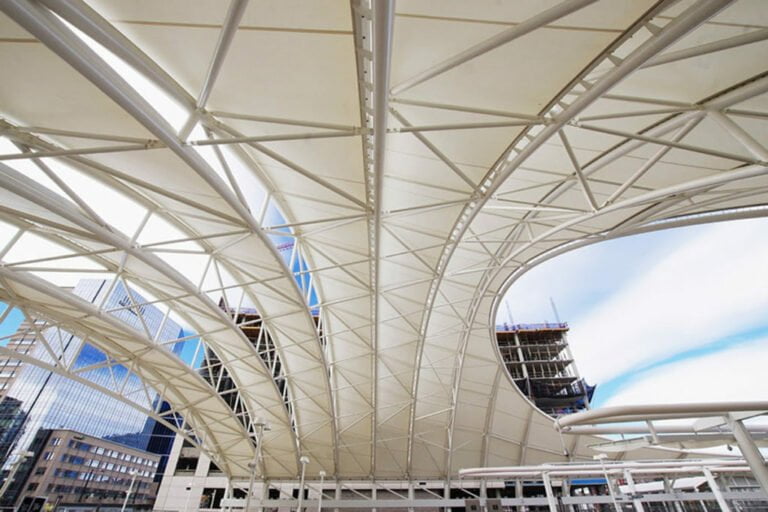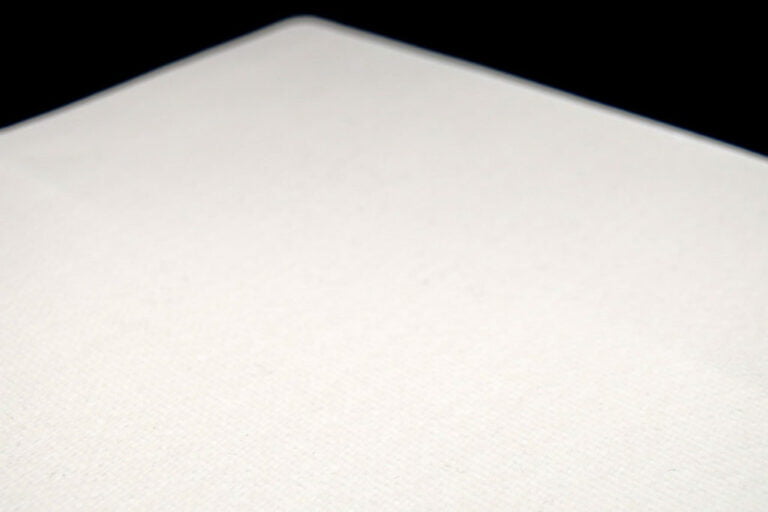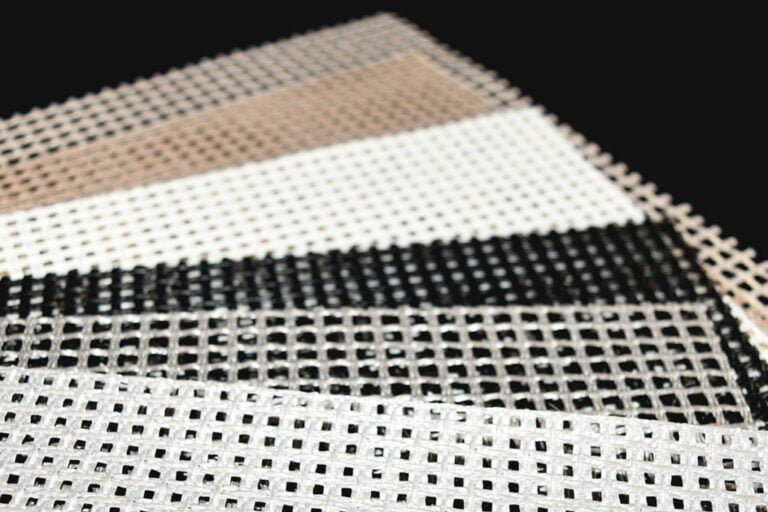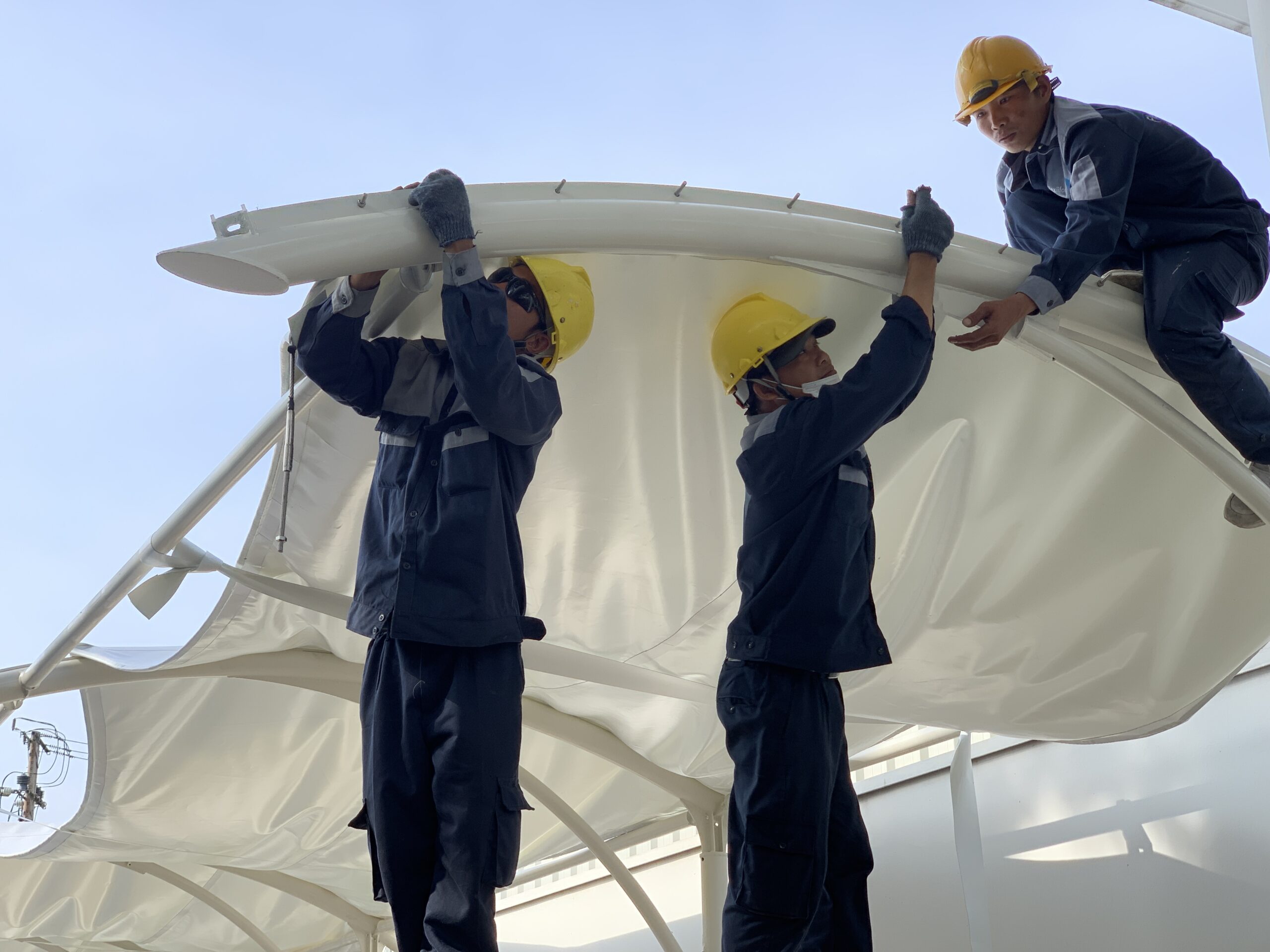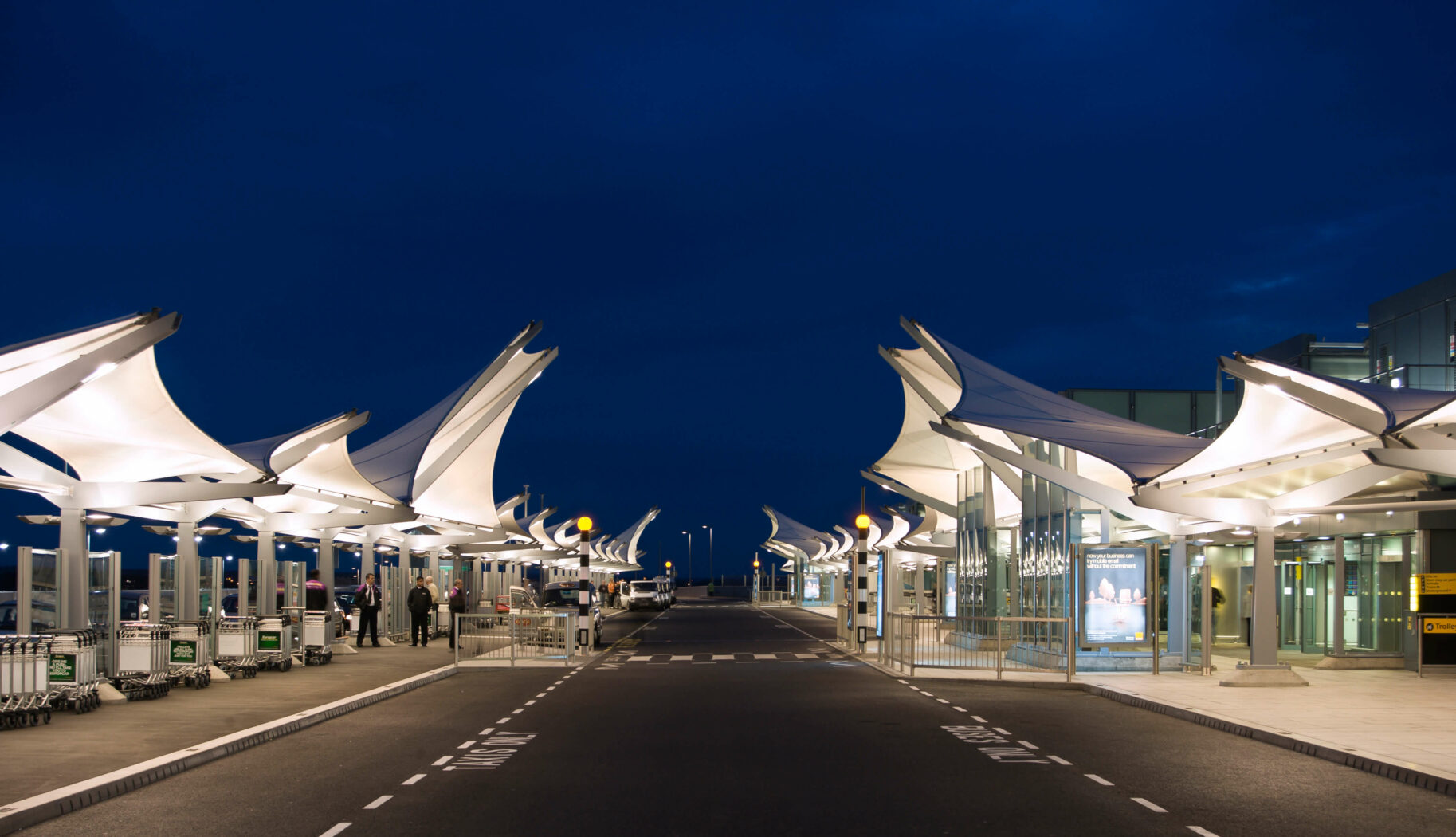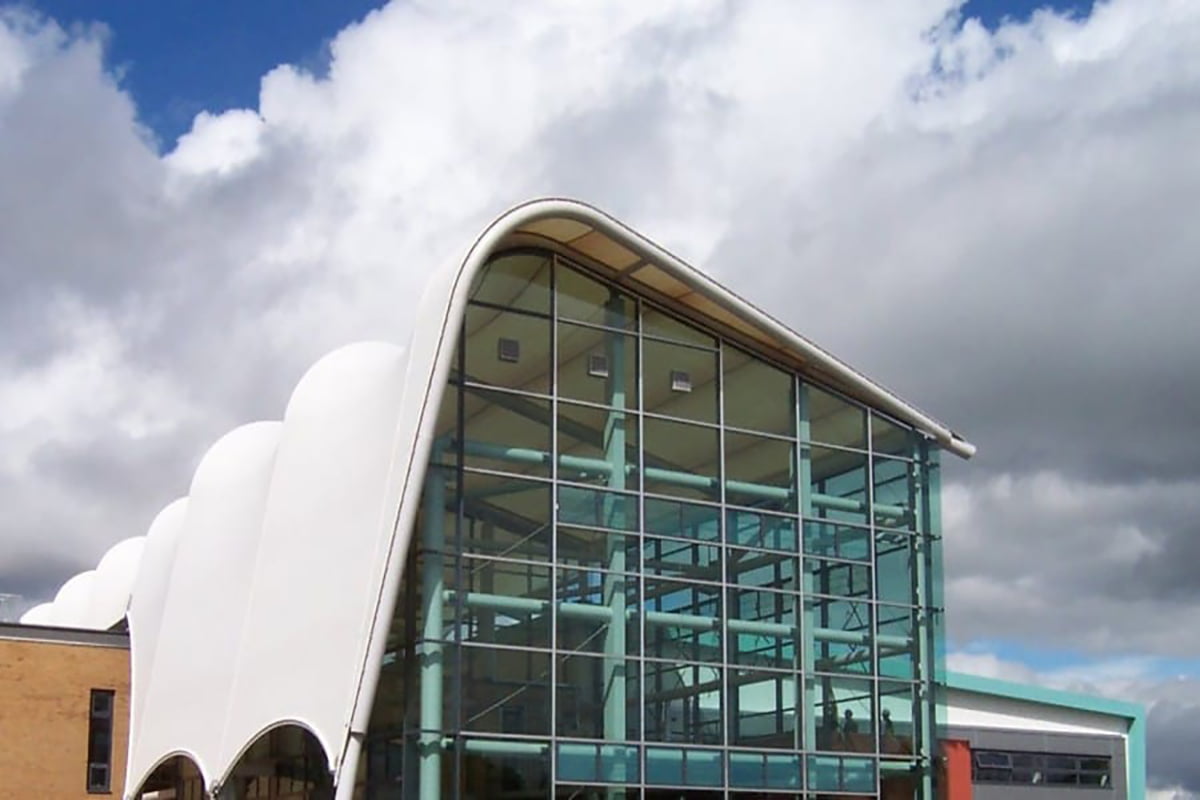Current Situation and Solution: Application of PTFE Canopy in Sustainable Tensile Membrane Architecture
In the tensile membrane architecture industry, material selection plays a key role in determining the longevity, performance and aesthetics of a building. PTFE (Polytetrafluoroethylene) coated fiberglass roofing is a material solution that is highly regarded for its durability, functionality and longevity. Developed by DuPont in 1938, PTFE has been widely used in construction since the 1970s, providing outstanding performance for many different types of buildings.
—
Technical Requirements Analysis & Solution Context
Tensile membrane structures often face stringent technical requirements for weather resistance, material durability in fluctuating temperatures, and natural light transmission to optimize energy efficiency. Materials must be chemically inert, corrosion resistant, and easy to maintain. Traditional material solutions may not fully meet these criteria, resulting in limitations in the building’s lifespan and operating costs. Therefore, finding a material that can simultaneously meet the requirements of mechanical, chemical, and optical durability is essential for complex and long-term architectural projects.
—
Technical Solutions
PTFE roofing solutions use Polytetrafluoroethylene material coated with fiberglass, providing superior technical properties, optimized for tensile fabric structural applications:
PTFE material properties
PTFE coated fiberglass is one of the most durable materials used in tensile fabric structures. It is capable of withstanding extreme temperatures from $-73^\circ C$ to $+232^\circ C$ (equivalent to $-100^\circ F$ to $+450^\circ F$), making it ideal for installation in diverse climates, from the freezing Arctic to the hot desert. With a tensile strength of up to $500,000$ PSI (10 times the tensile strength of steel), PTFE ensures stability and safety for large-scale projects. In particular, PTFE is chemically inert, resistant to microorganisms, moisture and immune to UV degradation, ensuring the material does not fade or become brittle over time.
Light transmission and energy efficiency
One of the outstanding features of PTFE roofing is its ability to transmit light but block heat radiation into the interior space. This helps the space under the roof become airy and have a significantly milder temperature than when using glass or conventional light-blocking materials. The ability to utilize natural light while controlling temperature helps save energy for lighting and cooling, especially effective when applied to greenhouse offices or spaces requiring stable environmental conditions.
Maintenance and Lifespan
The inherent “non-stick” surface of PTFE resists the adhesion of contaminants, allowing rainwater to self-clean most dirt. This property significantly reduces the need for routine maintenance compared to other materials such as PVC, which are more susceptible to dirt. As a result, PTFE roofing can last up to 30 years or more, optimizing the long-term investment cost for the building owner.
—
Results and Performance Evaluation
The application of PTFE roofing in tensile membrane architectural projects has brought many positive results and outstanding efficiency. This material is suitable for projects in difficult terrain/weather, projects requiring superior fire resistance, and large-scale, complex structures. Stadiums, exhibition spaces, museums, transit stations, eco-resorts, and building facades are all typical examples of the diversity in PTFE applications.
Weather resistance, UV immunity, and self-cleaning properties help buildings maintain their beauty and functionality over time without costly maintenance. Utilizing natural light and controlling heat radiation also contribute significantly to reducing energy costs, moving towards sustainable and environmentally friendly architectural solutions.

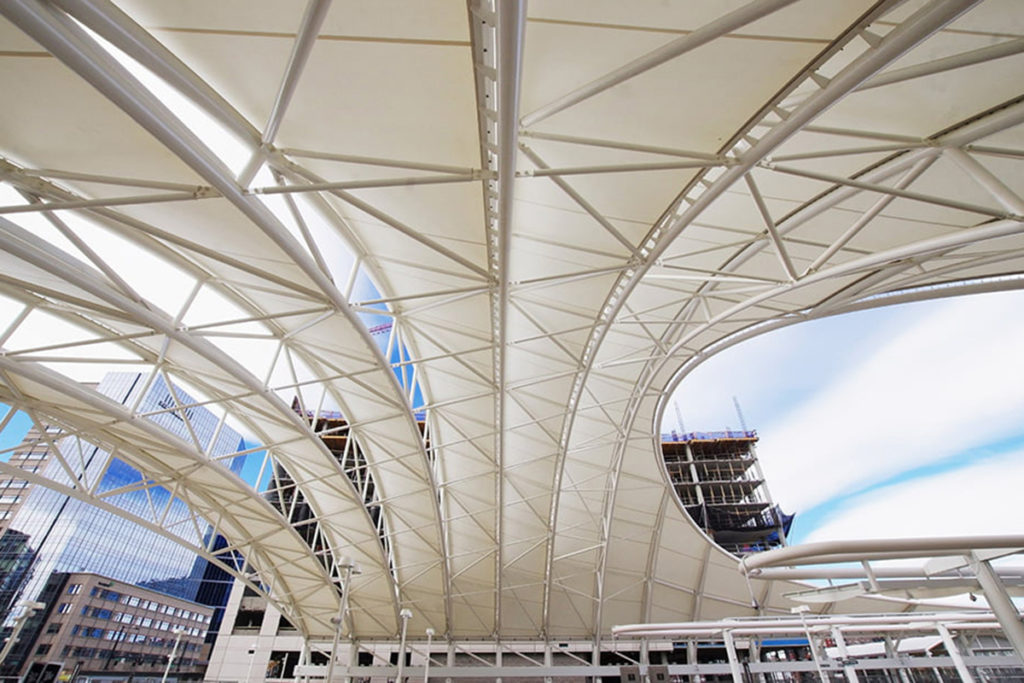

—
Contact Technical Consulting
Flexiiform is proud to be a prestigious and experienced unit in the design and construction of tensioned canvas projects in Vietnam and the region. With a team of highly specialized architects and engineers, trained according to international standards, we specialize in providing solutions for PTFE roofing in particular and Tensile Fabric in general. Materials at Flexiiform Vietnam are provided by Fastech, a prominent unit specializing in tensioned canvas materials in the Southeast Asian market, ensuring international quality and standards.
For expert advice on PTFE material applications for your project or to request a detailed quote, please contact our engineering team.
Contact information:
Company: Flexiiform
Phone: +84 8678 68830
Website: https://flexiiform.vn/
Fanpage: https://www.facebook.com/flexiiform/


